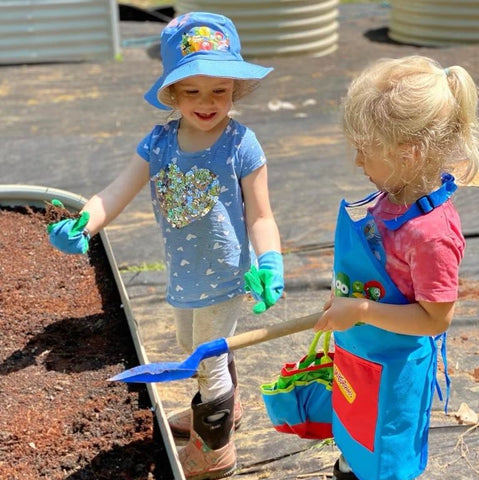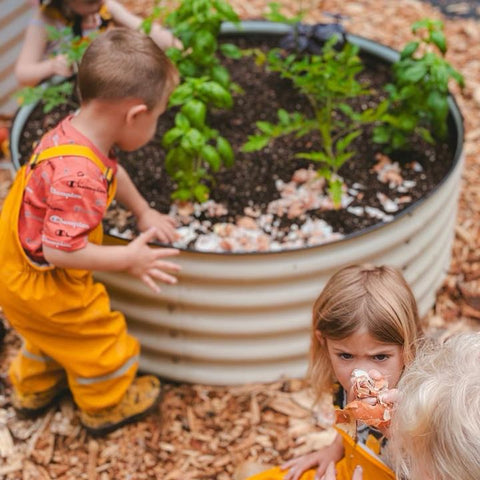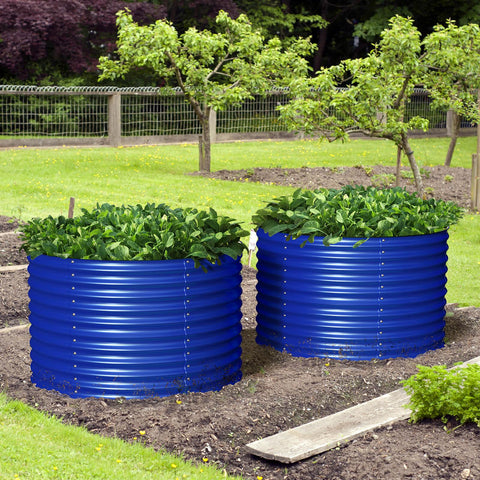8 Kinds Of Vegetables Suitable For Children To Grow In Raised Garden Beds
The raised garden bed is a perfect way to introduce children to growing fresh food. In addition, gardening with your children is a fun and beneficial way to spend a good time together. You can enjoy fresh air while they learn about plants and sustainable food choices.
However, you can plant vegetables in many ways, from containers to traditional vegetable fields, but the raised garden bed is better for children. Several 4x4 beds give your children a choice of space to do their own gardening. The small size is very suitable for them. Let their imagination play in the soil and study in the work without harming any of your crops.
For best results, you need vegetables that perform well on your garden bed. They also need to be easy enough for beginners to grow. If your child likes to eat the vegetables they grow, this process will become more interesting. Children are famous picky eaters, so it's better to plant the varieties they like. After all, carrots may be good on the garden bed, but do your children really want to eat them?

8 high raised garden beds for children
Use the following list of child friendly vegetables on your garden bed as a starting point and make sure you choose plants that thrive in your growing space. Before sowing, consider sun, water, soil, and temperature requirements.
- Carrots
The traditional carrot variety Danfoss is rich in antioxidants, and children like to pull them out of the soil during the harvest season. The purple variety called Zilong is also interesting because it is a very interesting color. There are also some smaller varieties that children can easily grow by themselves
How to plant on the raised garden bed: In the spring, plant the seeds directly into the soil, and be patient - it takes about 60 days for carrots to grow.
- Cherry and grape tomato
Children like to grow small varieties of their favorite vegetables. Therefore, cherries or grape tomatoes are both good choices and perfect substitutes for large varieties that need large growth space. Your child will like to use these tomatoes as a bite size snack.
There are many types to choose from, but Matt's wild tomatoes are perfect. This is because they are smaller than most vine trees, and each vine will produce a large number of tomatoes. They are ideal for summer salads or eaten directly from vines.
In addition, you can save space for garden beds by choosing smaller varieties. This will give you more space to grow other vegetables or companion plants.
How to plant on the raised garden bed: It is easier to start planting tomatoes indoors by selecting plants from the local garden nursery in April or May. They will be transplanted into an elevated garden bed full of fertile soil around the middle of May. Cherry and grape varieties will mature early in the season, and all varieties will perform well under the support of cages.
- Potatoes
For children, the best part of growing potatoes is harvesting them. Pulling potatoes out of the soil is like looking for buried treasure. You can plant whatever you want from the kitchen residue! Although, the varieties you find in the local garden nursery are unlikely to suffer from disease.
Yukon golden potato is a good traditional choice with a short growing season. Children also like to grow Virgin Violet, which is very interesting.
How to plant on a raised garden bed: Plant seed potatoes 4 inches deep in moisture retaining soil. During the growing season, be sure to add fresh compost several times near the plants in the raised garden bed. The temperature of potatoes is low, so you can start planting at any time between March and June.
- Cucumber
If your children don't like cucumbers, they may like to eat pickles. It's easy to grow your own cucumber on a raised vegetable bed. In addition, two different ways of eating provide you with some ways to let your children eat more vegetables.
There are many cucumber varieties to choose from, but I like Marketmore cucumber. I only planted this type several times without any problems. Another interesting choice your child may like is the Mexican sour cucumber, which is about 1 inch long and looks like a cucumber flavored watermelon. If you have leftovers, you can also use them to make pickles.
How to plant on the raised garden bed: Cucumber seeds are large, and you can directly plant them at the end of May or early June. Try to plant 6-8 seeds and dilute the crop to the three strongest seedlings for the best results. You can also grid cucumbers to save space
- Beans
Many children learn to plant bean stalks in science classes in primary schools. This is because they grow rapidly, which encourages children to learn science and grow vegetables. There are also many interesting ways to start growing beans, from planting on cotton balls to sprouting seeds in plastic bags.
Fonda Science Bean is a delicious choice for many children. They can also climb very high, which makes them very suitable for growing on trellises or bean cone tents. Low irrigation pigeonpea varieties are also easy for children to harvest, and do not need support or scaffolding to grow
How to plant on a raised garden bed: Try to plant the seeds directly into the soil, and plant a small piece of beans with seeds about 4 inches apart. They should germinate in about 4 to 8 days and fully mature in 65 days.

- Kidney beans
Sugar pods are delicious, and the variety known as Cascadia requires less support than most other types. You don't need to shell these peas, so you can even eat them directly from the vine. The Little Miracle dwarf is another great dwarf, suitable for children to look for treasure in the pea pod.
In order to increase difficulty and creativity, please try to grow peas on the garden bed with an arch grid. Your child can build an interesting structure. You can plant more food by planting smaller plants under the trellis that like shade.
How to plant on a raised garden bed: peas need to be supported, and tomato cages can be easily pushed into your raised garden bed. Plant one inch deep peas about two inches apart around the bottom of the cage and water them. It is expected that the seeds will germinate in about two weeks and be harvested in about two to three months.
- Chili
Children often like sweet pepper, and there are many varieties that provide sweet taste. They are very suitable for snacks, and red pepper is usually the sweetest choice
Try Johnny's Red Lunch Box Chili Peppers: They are a small, very sweet variety with a high yield. With this variety, you don't need to worry about the flower tip decay and other common problems of growing pepper.
How to plant on a raised garden bed: Plant pepper seedlings by digging a hole about 6 to 8 inches deep in the bed, leaving about 10-15 inches between the plants. Put the compost into the hole, then put the plants in and cover them with soil. Peppers will mature in summer, and once the fruit has grown to the desired size, you can harvest the plants.
- Lettuce
Green vegetables are healthy. Although most children do not want to eat a head of lettuce directly from the garden, they are good crops for children. They grow fast and are relatively reliable, so your child can get results quickly and learn to make salads.
When growing lettuce, you can choose the head or leaf variety. The growth season of head lettuce is about 40-50 days, while that of leaf lettuce is about 30-35 days.

How to plant on a raised garden bed: Sow the seeds directly into the moist soil. It is important to provide shade for them. The seeds will begin to germinate after about seven days.
